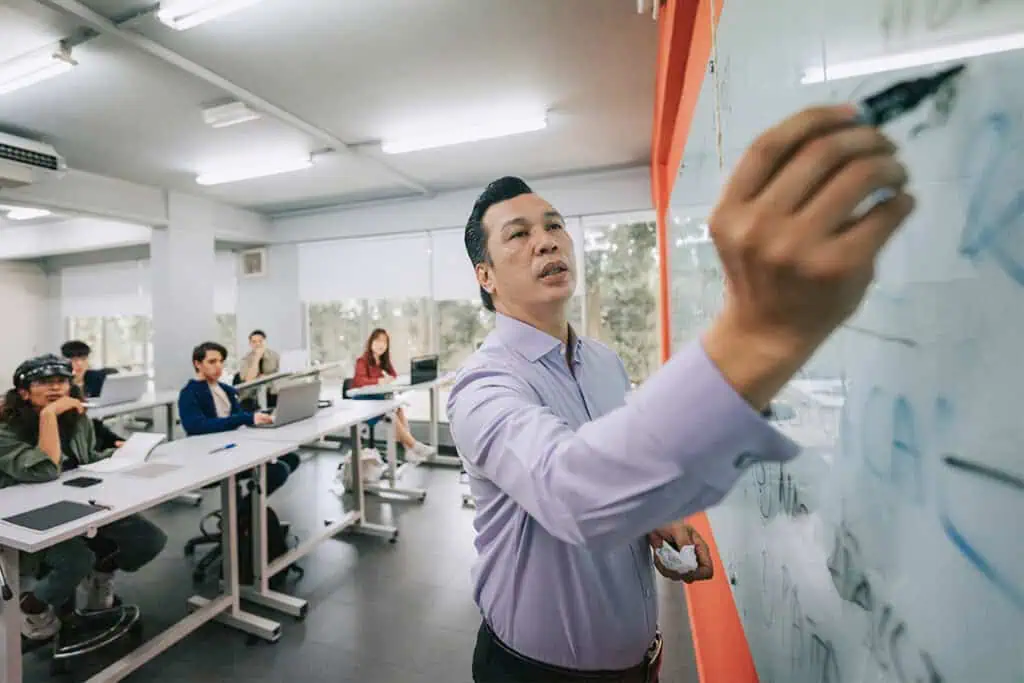Bridging the Language Gap: Empowering Immigrant Professionals Through Contextualized English Programs

Published in March 2024, the Department of Labor’s Bridging the Gap for New Americans report explores the barriers faced by internationally educated immigrants and refugees who seek to resume their careers in the United States. With our labor market increasingly in need of their skills and experience, the report highlights a key factor in workforce inclusion: the need for English language educational programs contextualized specifically for professional and technical workplace needs.
The U.S. is currently facing significant labor shortages across several critical industries, such as health care, and in professions that require post-secondary education, such as teaching and engineering. At the same time, an estimated two million college-educated immigrants are underemployed—yet many often face significant challenges as speakers of languages other than English, especially when it comes to gaining work experience and passing national or state board requirements.
Providing English language courses contextualized to the learner’s field of expertise can make a critical difference in helping job seekers overcome the language barrier. Certain programs across the country have made a difference by preparing newcomers to enter their preferred field. Notable examples are in Colorado and New York.
Colorado’s VCESL Program
In 2022, Colorado’s Office of New Americans (ONA) launched a pilot program, the Virtual Career-Aligned English as a Second Language (VCESL) program, designed to provide English language learners (ELLs) in the state with high-quality, work-based learning, job training, and employment opportunities. Funded by American Rescue Plan federal funds allocated through legislative efforts, VCESL provided free career and English language courses to equip learners to access specific workforce sectors and to upskill the talent pool of potential and current employees in in-demand job sectors. The program offered the courses to over 4,000 participants in less than two years via the digital platforms EnGen and BurlingtonEnglish. In post-program surveys, 86 percent of respondents reported improved job skills, and 66 percent said they were communicating better with colleagues at work.
An example of the types of courses VCESL provided is EnGen’s contextualized English language learning course for a career as a pharmacy technician. The course helps address a critical workforce need for trained pharmacy technicians: 70 percent of community pharmacies have reported staff shortages, and nearly 90 percent report difficulty hiring pharmacy technicians. EnGen lessons focus on understanding terminology and concepts that are key to becoming certified in the pharmaceutical industry, as well as medications and communication with customers and patients. Such career-specific language acquisition helps New Americans with pharmaceutical or other related backgrounds succeed in their job search and as employees at pharmacies across Colorado.
NYC Welcome Back Center
The NYC Welcome Back Center at LaGuardia Community College serves internationally trained nurses seeking to enter the health care sector in the U.S. In addition to offering personalized career counseling, credential evaluation and licensing assistance, employer partnerships, and peer mentorship, the center provides contextualized English language classes through an integrated training model. Recognizing students as experts in their field, the program reactivates their knowledge as trained nurses but within the U.S. context. Targeted language instruction alongside professional development courses support English language learners’ efforts to develop a career-specific vocabulary and support their efforts to improve their technical skill set, equipping them with the skills and lexicon they’ll need to meet U.S. employers’ expectations.
These successful models in Colorado and New York highlight the deep impact of contextualized ELL education while addressing significant labor shortages. To continue tackling widening workforce gaps, governments, employers, and philanthropy should invest in contextualized ELL programs that can effectively prepare immigrant professionals to enter the U.S. workforce. The NYC Welcome Back Center, the VCESL program in Colorado, and the EnGen and BurlingtonEnglish language education platforms offer insights to stakeholders aiming to continue working towards workforce inclusion by adopting policy ideas from the Bridging the Gap report.
In addition to the Labor Department’s recommendations, WES published a full set of recommendations in response to the Bridging the Gap for New Americans study. Learn more and share the full report.




